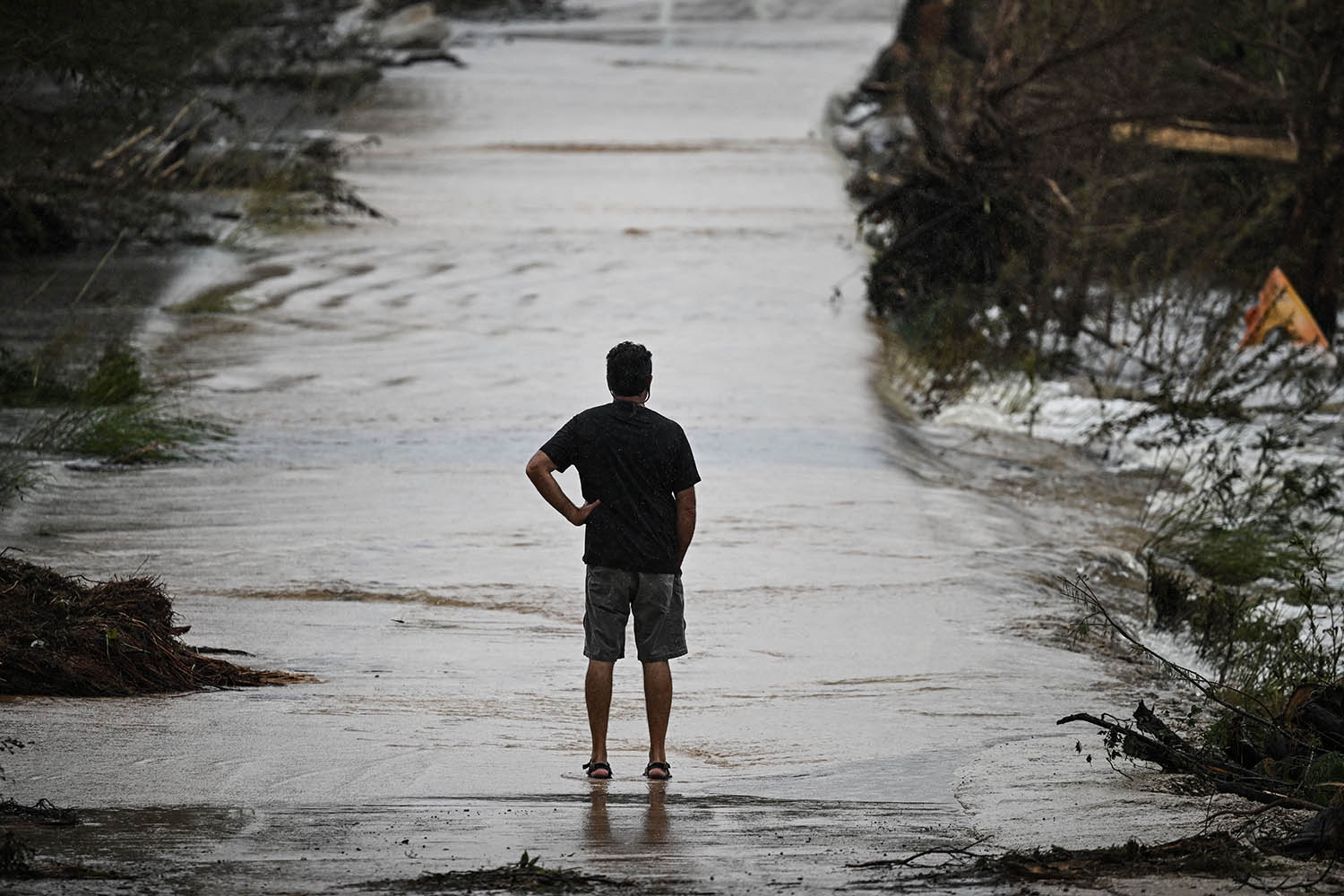Nine days after flash floods devastated Texas, more than 120 people are confirmed dead and rescuers continue to search for scores of people who are still missing. Some local officials have cast blame on weather reports for failing to predict the size of the storm.
So what?
The forecast was as accurate as it could be. Even with the best models, it is nearly impossible to predict the exact locations and intensity of thunderstorms days in advance. And here’s the rub: climate change will make things even trickier. In the case of Texas, more than 120 people are confirmed dead and rescuers continue to search for scores of people who are still missing.
Heavens above
Interest in the skies is not a new phenomenon. Samuel Johnson wrote in 1758 that when two Englishmen meet, “their first talk is of the weather”. A century later, Vice-Admiral Robert FitzRoy founded the UK Met Office and gave the first public weather forecast. Published in the Times and syndicated widely, FitzRoy’s predictions made him a celebrity. The satirical magazine Punch declared him “Clerk of the Weather” and a racehorse was named after him.
Do listen
The vice-admiral’s innovations came with serious responsibility. He issued the first storm warning in 1861, using cones and drums to alert ships in harbour and along the coast. Seafarers on the Tyne didn’t listen to the warning and many people died. Even now communication is seen as a key element in effective forecasting. That’s why storms are given names.
Leaps and bounds
FitzRoy took his own life after facing constant criticism for the accuracy of his predictions, but his legacy is legion. His early prognostications laid the foundation for the modern-day shipping forecast, as different mediums began to emerge. The BBC’s first daily radio broadcast in 1922 started with a news bulletin, followed by the weather.
No greater pressure
Forecasts became crucial for soldiers too. From a weather station off the west coast of Ireland, Maureen and Ted Sweeney took hourly barometer readings in the lead-up to the 1944 D-day landings. The invasion was postponed by a day after they saw a storm heading towards the Channel. This spot may well have changed the course of history.
The earlier the prediction, the harder it is to fully assess the danger, particularly with extreme localised weather events
Over to the weather
The perennial image of the forecaster now comes from TV. In 1954, George Cowling became the first weatherman on British television. He told viewers to hang out their washing because of the high winds. Three decades later, Michael Fish achieved infamy after insisting there was no hurricane coming to the UK. Hours later, the Great Storm of 1987 hit.
Next gen
Fish started out in the Met Office, and many weather broadcasters are trained meteorologists. But the internet has opened up new pathways for both amateurs and the well-qualified. A young Harvard graduate called Matthew Cappucci is known for his erudite and engaging reporting on severe weather. He has more than 100,000 followers on social media.
Tech upgrade
Out of the public eye, there are countless meteorologists quietly working at forecast and research centres on every continent. They are aided by huge supercomputers and sophisticated modelling software used for short-term weather forecasting, as well as long-term climate predictions in the order of hundreds of years.
State of play
Advancements mean that a four-day forecast today is as accurate as a one-day forecast was 30 years ago. But there is little margin for error. The term “the butterfly effect” was coined in the 1960s to describe how even tiny changes in the atmosphere can cause vastly different outcomes. Predictive challenges come to the fore when forecasters are confronted by extreme weather.
Perfect storm
The severity of the floods in Texas was in part due to the geology of the area, which is known as “flash flood alley”. It has a fault zone that can intensify rainfall patterns, and a history of storms magnified by steep terrain, poor soil absorption and major river basins.
Taking the temperature
There was less than a 0.1% chance of so much rain falling in that area of Texas in any given year. But climate change is making these events more frequent and intense, because warm air absorbs more moisture than cool air, per the Clausius-Clapeyron equation. “Extreme” precipitation rose by up to 15% in Texas from 1980 to 2020.
By night
The scale of destruction also related to timing. The US National Weather Service issued flood watch messages on Thursday, 3 July, but it wasn’t until the early hours of Friday, when most Texans were asleep in bed, that the Guadalupe River surged and alerts rapidly escalated.
Too late
This epitomises the current limits of forecasting. The earlier the prediction, the harder it is to fully assess the danger, particularly with extreme localised weather events. Half the battle in the so-called “last mile” is to make sure people can access and act upon the information they need.
Next frontier
It is hoped that advancements in artificial intelligence will bring breakthroughs that empower forecasters to meet the rising threats of climate change. Last year an AI weather program from Google DeepMind, trained on four decades of data, performed better and faster than the world-leading Ensemble Prediction System forecast. Both the Met Office and the US National Oceanic and Atmospheric Administration (NOAA) are embracing AI in their modelling.
Potus-shaped obstacle
Not everyone is rowing in the same direction. The Trump administration’s proposal to slash the NOAA’s funding by roughly 25% jeopardises labs that produce prediction tools and conduct research to better predict storms like the one in Texas, as well as floods seen in the past year in Valencia, Porto Alegre and Himachal Pradesh.
What’s more…
Data collected from the NOAA’s satellites, buoys, radars and radiosondes all feed global models. US research that could help forecasters everywhere is at risk of being lost.
Photograph by Ronaldo Schemidt/AFP via Getty

